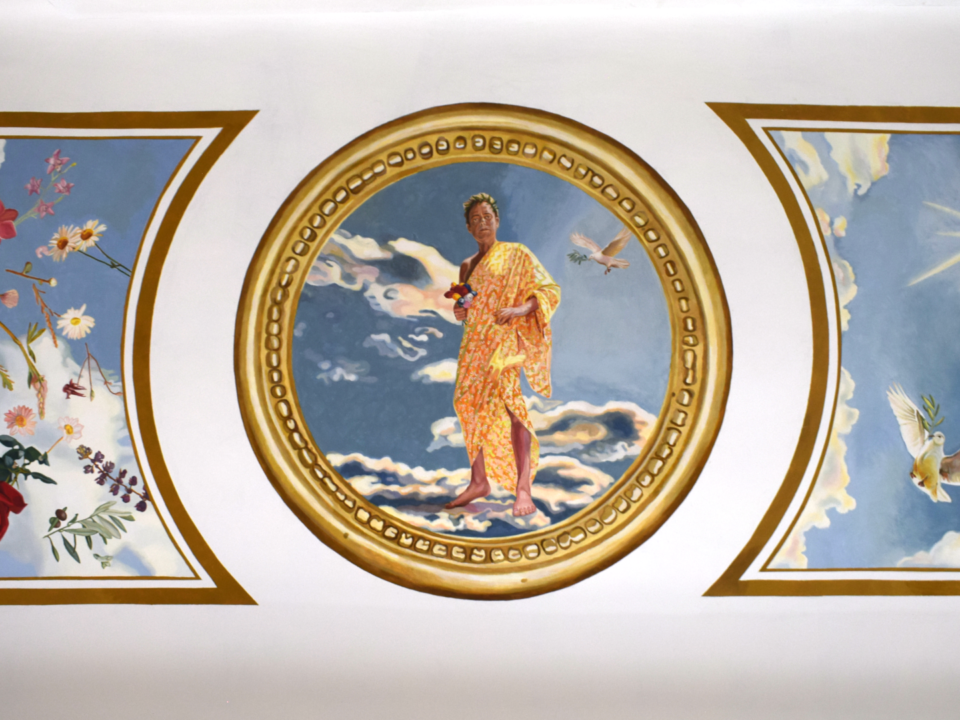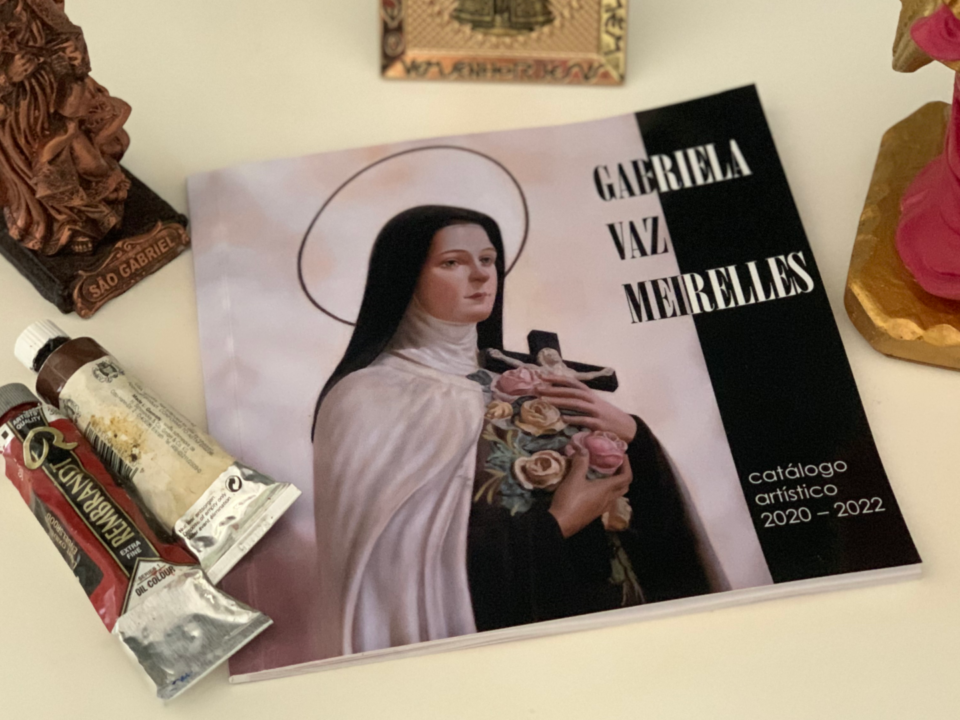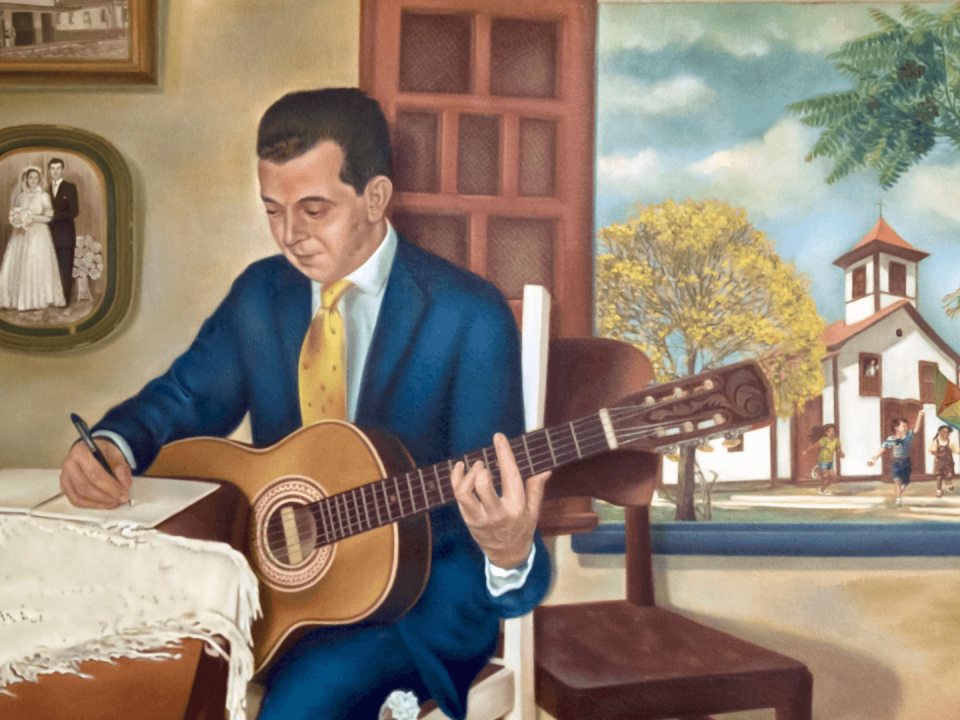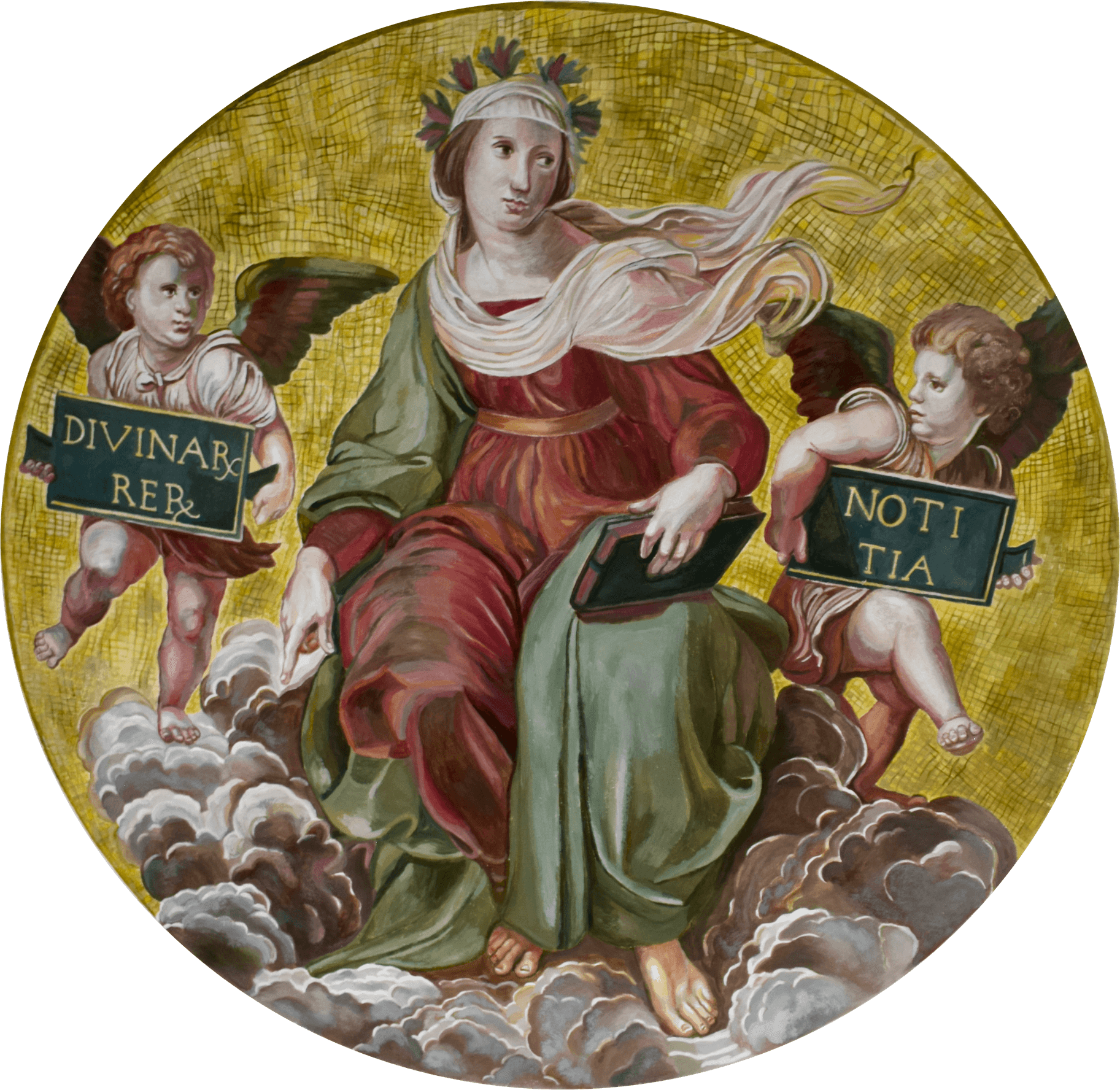
Gabriela Vaz Meirelles, copy of Theology (1508, Raffaello Sanzio), mural painting, tempera on ceiling, 100 cm, 2023
At the Palais des Beaux-Arts in Lille there is a preparatory drawing depicting the putto on the right. Moreover, the Ashmolean Museum in Oxford houses a drawing used for the female figure and for that of Poetry.
History Background
Theology from Raffaello is a fresco that measures 180 cm and takes part of the decoration of the vault of the Stanza della Segnatura in the Vatican Museums. It was the Pope Julius II who commissioned the work to the young Raphael.
The vault was the first part to be frescoed, from the end of 1508. Grotesque frames divide the space into thirteen compartments. In the center there is an octagon with cherubs holding the Della Rovere papal coat of arms. Around it there are four thrones (diameter 180 cm) with the personifications of Theology, Justice, Philosophy and Poetry. At the corners there are instead four faux mosaic panels (120 x 105 cm each) with Adam and Eve, the Judgment of Solomon, the First motion and Apollo and Marsyas.
The four thrones or medallions are arranged in a cross on the medians and correspond to the four cardinal points, forming two axes in pairs facing each other, intended not as contrasts but as harmonic reflections. On the west-east axis, Theology and Philosophy face each other, understood as complementary ways to reach the Truth. Theology through faith and spiritual revelation, and Philosophy through reason and observation. The other axis, in a north-south direction, is represented by Poetry and Justice, referring to the ways of inspiration and discipline that allow men to apply the principles of truth.
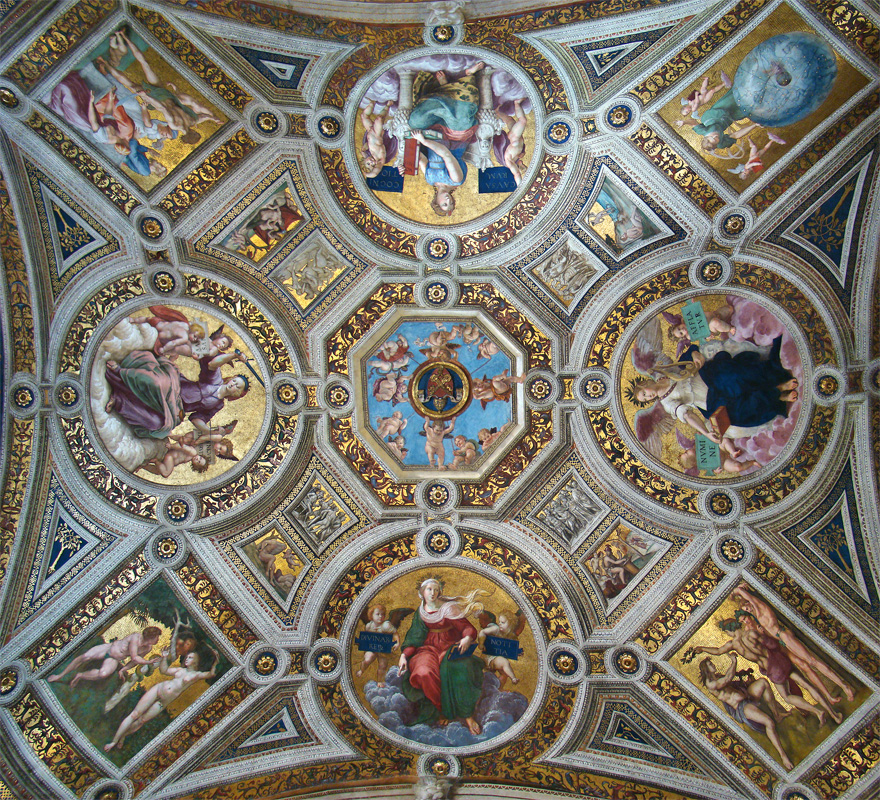
Vault of the Stanza della Segnatura
The Style Characteristics of Theology
The personification of Theology is represented seated on a throne of clouds in a faux gold mosaic background and wearing a dress inflated by the wind in red, green and white, the colors of the theological Virtues of Charity, Hope and Faith. The hair is gathered and covered by a long clear and transparent veil that waves to the right. Bare feet rest on clouds, in a reference to the celestial and spiritual dimension. The woman holds a heavy book in her left hand while she points downwards with her right hand. On the sides it has two putti holding two-handled tables with the latin inscription: DIVINA[RUM] RER[UM] NOTITIA (“revelation of divine things”), based on Justinian.
The gold background of the tondo is associated with divine light and a higher world and conditions the entire chromaticism of the image. In fact, the colors tend to be warm, the dark red of the dress and the flesh tones. The green of the cloak then creates a complementary contrast with the red of the dress and is therefore very evident. Below, however, the clouds create a gray and dark base that supports the central figures.
The Theology and the two putti are all placed on a limited depth in the foreground. The fresco has a round shape and the figures inside adapt compositionally to the circular dimension.
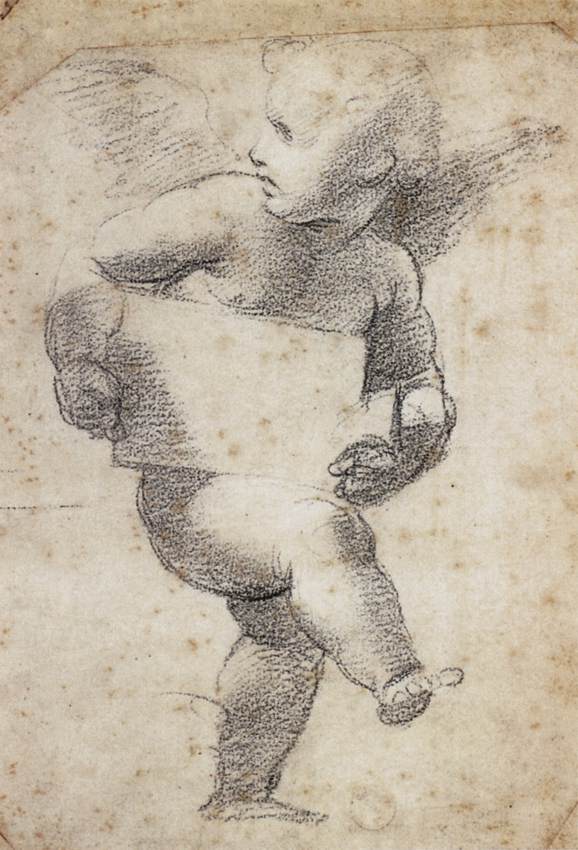
Winged Putto with Cartello, Raffaello Sanzio (preparatory drawing)
The Painting Process
For the copy of Raffaello's fresco on a ceiling of an appartment in Florence, Gabriela used a mural painting approach with tempera. First, she marked the 100 cm diameter circle on the ceiling where the painting should be done. She then started cleaning the surface by eliminating dust and removing loose plaster and paint fragments from it. She then leveled and plastered its surface, sand it and cleaned it again with a sponge soaked in water. After the ceiling was dry, she applied one coat of wall fixative, let it dry and then one coat of white washable wall paint for interior. For the underdrawing layer, Gabriela transferred the composition to the surface of the ceiling using a previously prepared paper with burnt umber oil color. In the next day, she did a warm grisaille layer using a mixture of white washable wall paint and raw umber tempera. For the color underpainting layer, she applied broad fields of tempera color in the major areas and turned to the smaller ones using smaller brushes. She worked gradually, day after day, adding depth and details after allowing previous coats of color to partially dry.
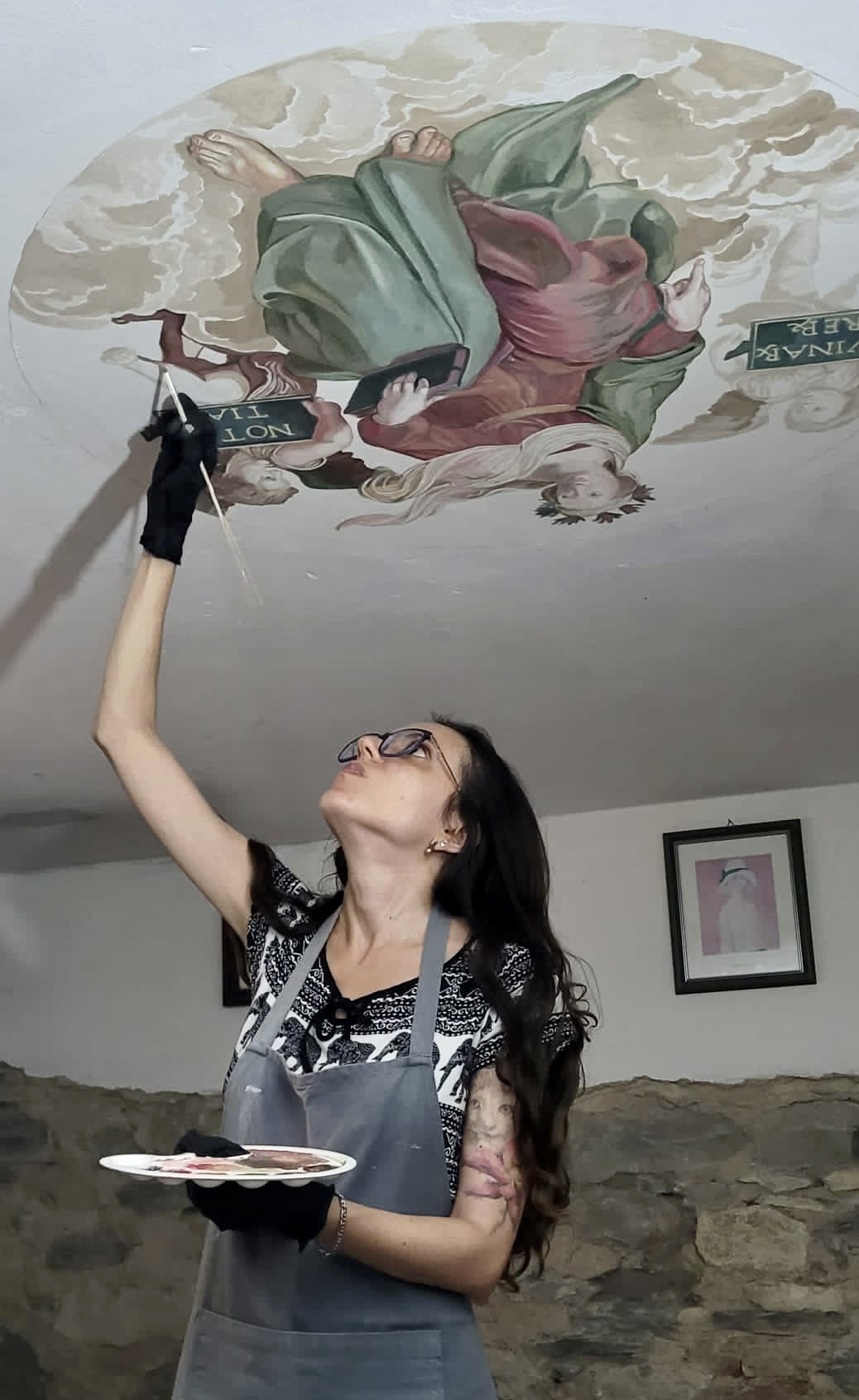

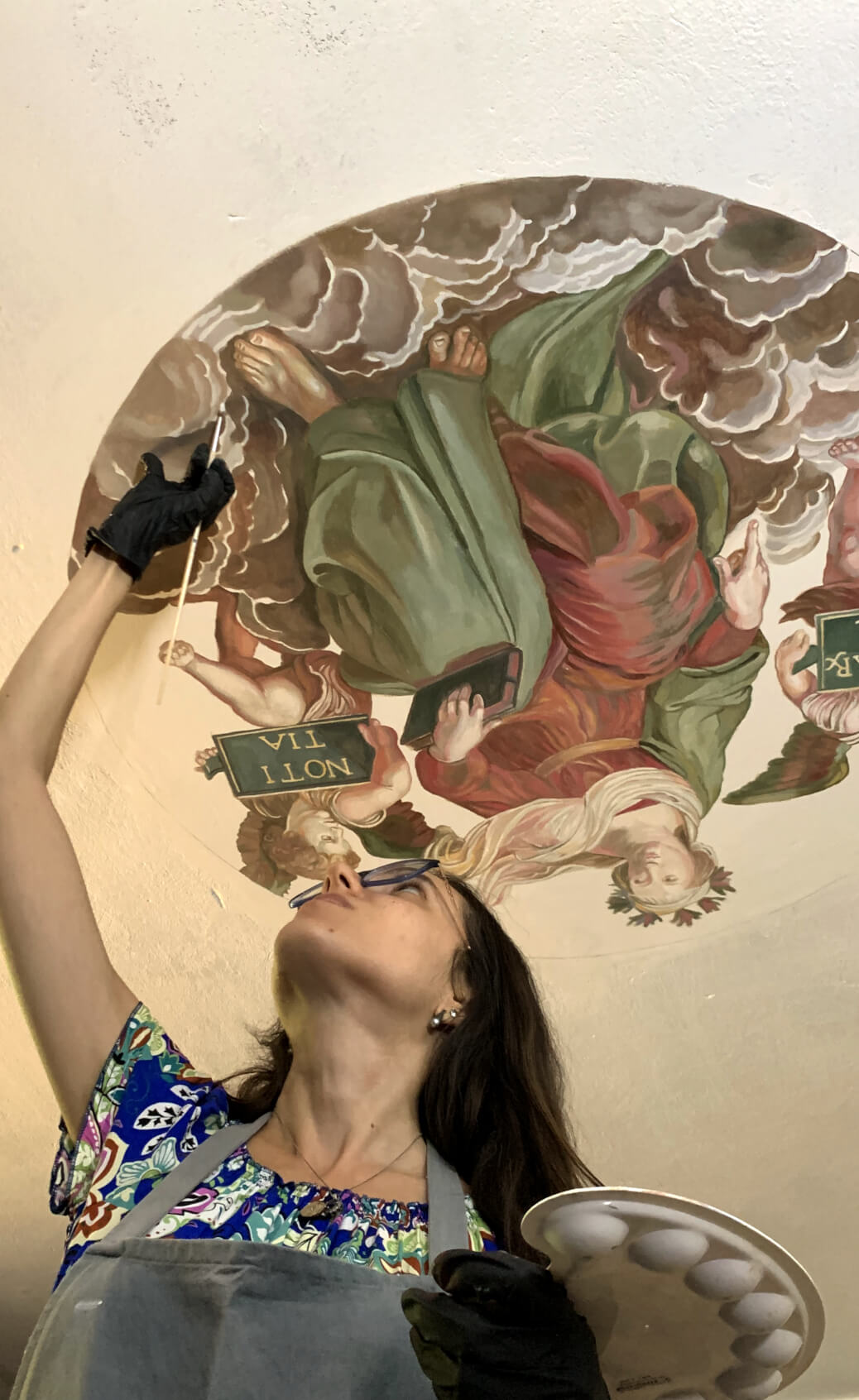
References
Teologia (Raffaello). In Wikipedia. Available at: https://it.wikipedia.org/wiki/Teologia_(Raffaello).
Stanza della Segnatura. In Wikipedia. Available at: https://it.wikipedia.org/wiki/Stanza_della_Segnatura.
Teologia di Raffaello. ADO, Analisi dell'Opera, 3 febbraio 2020. Available at: https://www.analisidellopera.it/teologia-di-raffaello/.
COCCHI, Alessandra. Volta della Stanza della Segnatura. Geometrie fluide. Available at: https://www.geometriefluide.com/it/volta-della-stanza-della-segnatura/.

